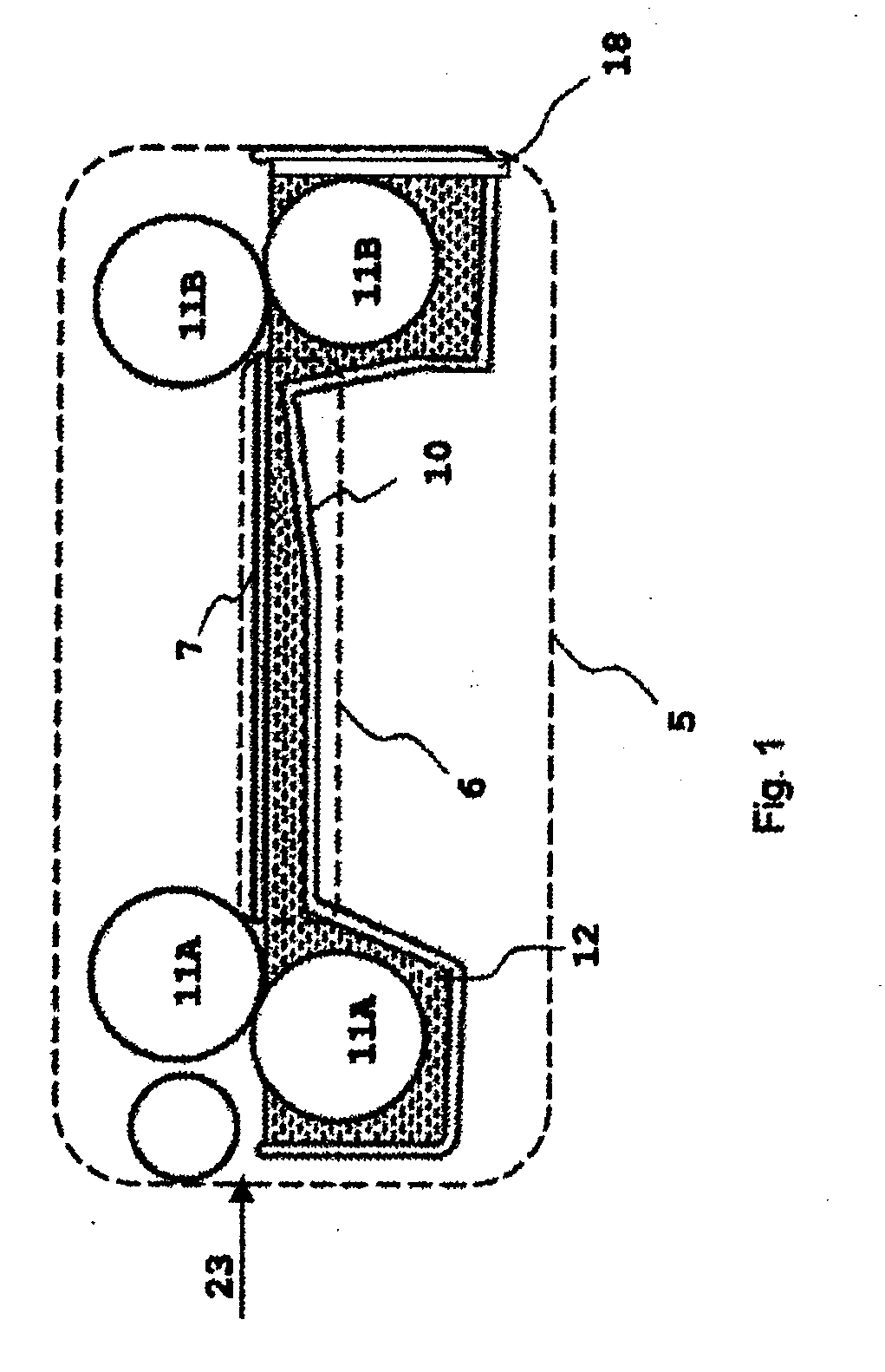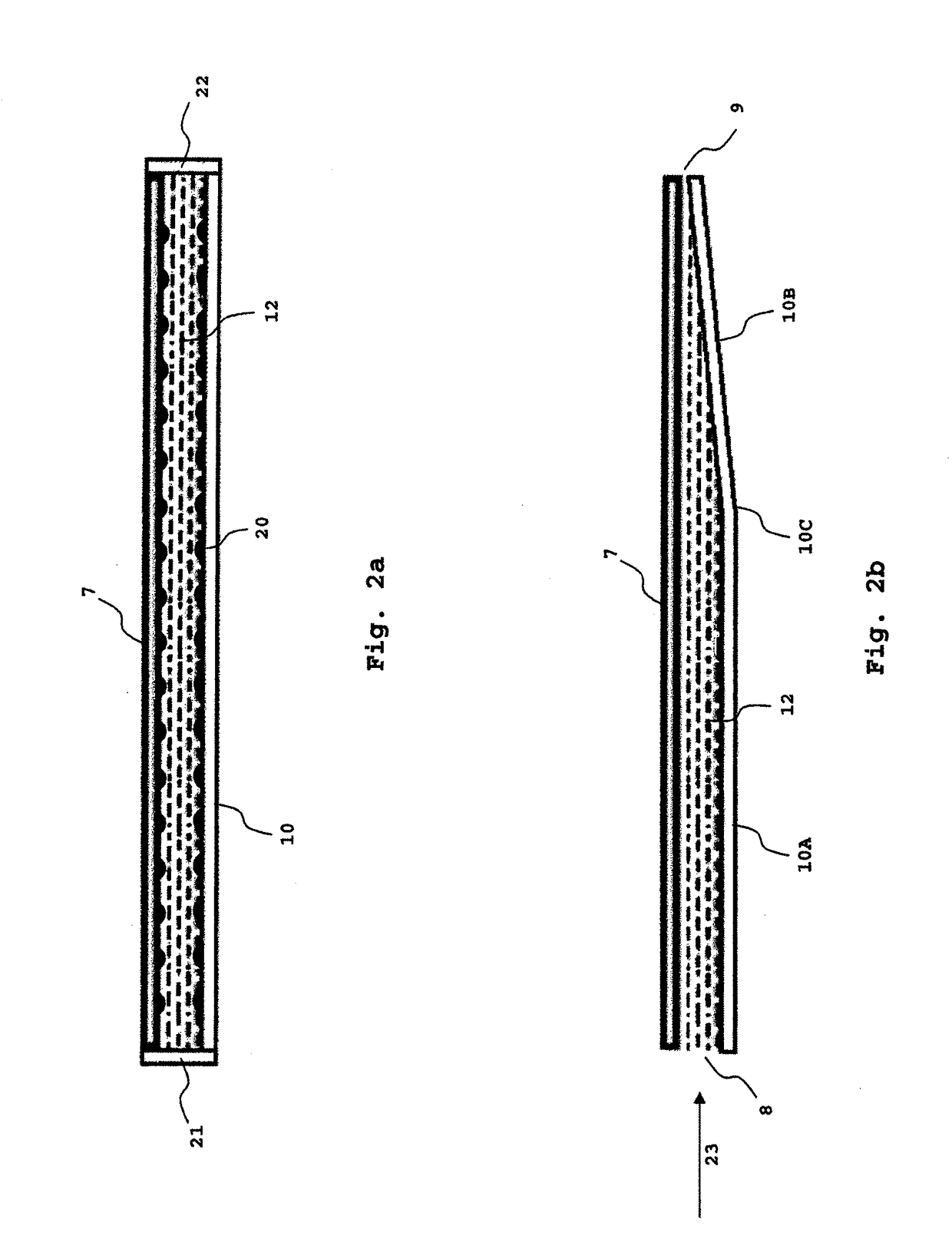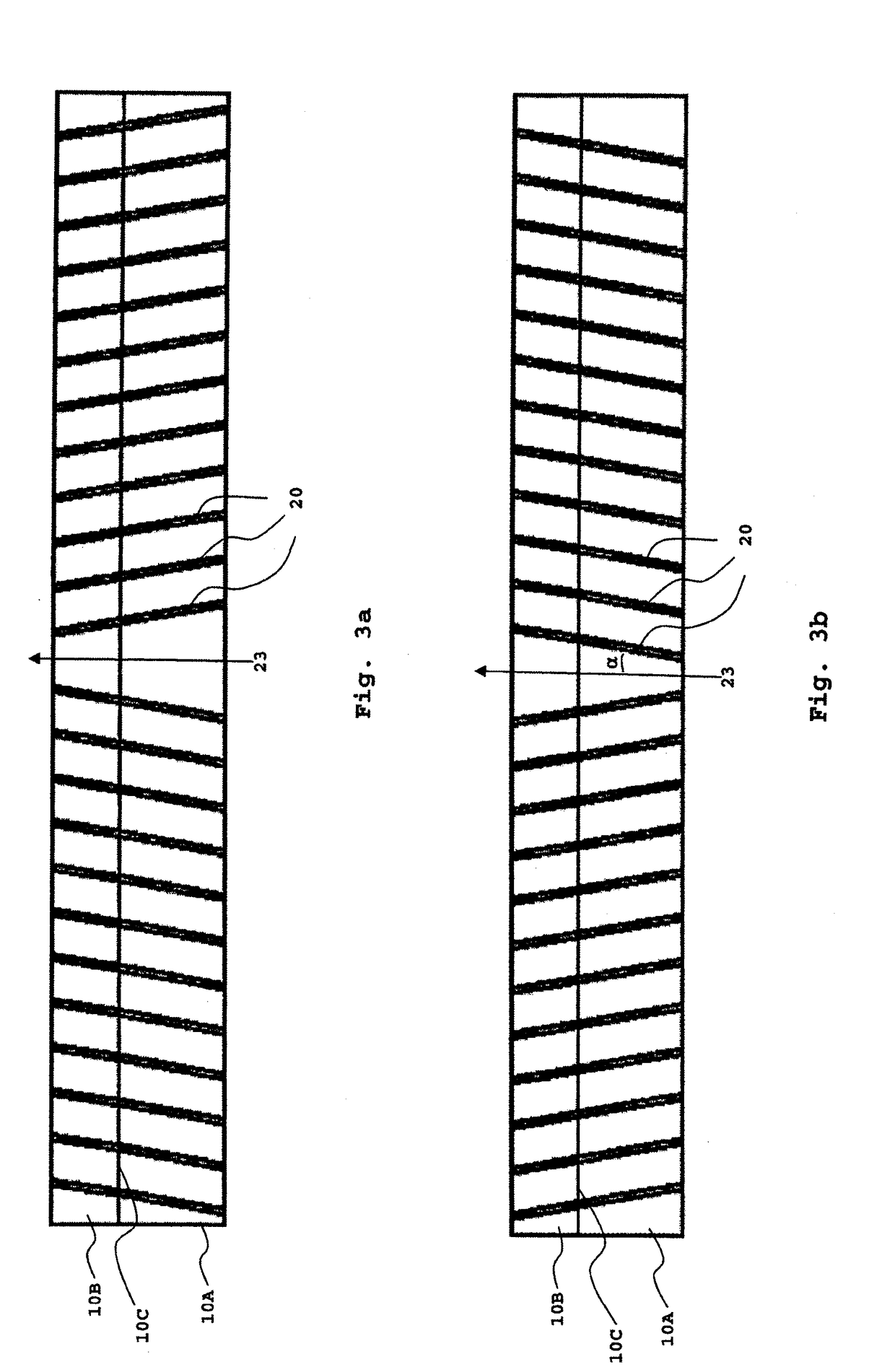Method for processing a lithographic printing plate
a technology of lithographic printing and processing method, which is applied in the direction of photomechanical treatment, photomechanical equipment, instruments, etc., can solve the problems of unfavorable huge poor lithographic properties of printing plate, and risk of so-called “over-development” of plate material, so as to reduce the amount of waste liquid generated, reduce the consumption of rinse water, and avoid or reduce the contamination of gum solution
- Summary
- Abstract
- Description
- Claims
- Application Information
AI Technical Summary
Benefits of technology
Problems solved by technology
Method used
Image
Examples
examples
[0199]The pH change caused by cross-contamination between the developing solution and the rinsing and / or gumming solution which may occur during processing, has been simulated by a titration reaction. Then, the amount of replenishment i.e. fresh rinsing solution, required to obtain the start pH was quantified by a back titration reaction.
[0200]This test gives an idea of how much replenishment solution would be required during processing to maintain the pH of the rinse solution substantially constant.
1. Rinsing Solutions RS1 to RS4
[0201]The composition of the rinsing solutions RS1 to RS4 are given in Table 1.
TABLE 1rinsing solutionsRS1RS2*RS3*RS4*RinsingDemineralizedCertipurCertipurCertipursolutionwaterbufferbufferbufferpH 4pH 7pH 10pH**7.254.067.069.98*Commercially available form Merck;**Measured with a ProfiLine pH / Cond 3320 commercially available from WTW.
2. Titration Reaction
[0202]In a first step, 1 ml of THD300 developer was added stepwise (per 0.1 ml) to 50 ml of the different ...
PUM
| Property | Measurement | Unit |
|---|---|---|
| volume | aaaaa | aaaaa |
| volume | aaaaa | aaaaa |
| volume | aaaaa | aaaaa |
Abstract
Description
Claims
Application Information
 Login to View More
Login to View More - R&D
- Intellectual Property
- Life Sciences
- Materials
- Tech Scout
- Unparalleled Data Quality
- Higher Quality Content
- 60% Fewer Hallucinations
Browse by: Latest US Patents, China's latest patents, Technical Efficacy Thesaurus, Application Domain, Technology Topic, Popular Technical Reports.
© 2025 PatSnap. All rights reserved.Legal|Privacy policy|Modern Slavery Act Transparency Statement|Sitemap|About US| Contact US: help@patsnap.com



